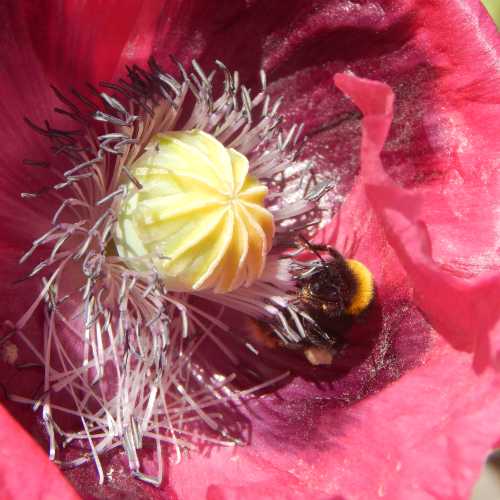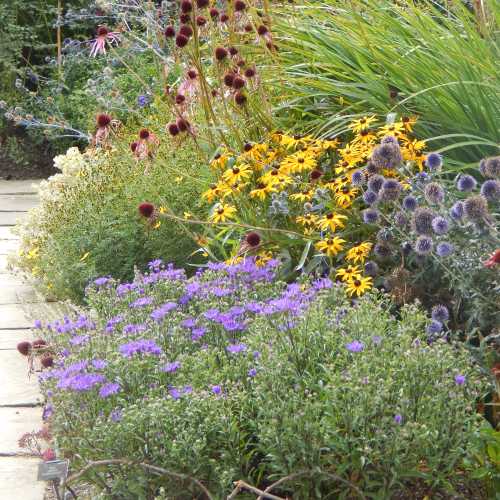Why do bees visit some flowers whilst ignoring others?
Date: 21st February 2020
Questions:
Why
do bees visit some flowers whilst ignoring others?
Do bees prefer certain flowers, and if so, why?
Why are flowers visited only by certain bee species but
not other species?
Answer:
Bees prefer to visit flowers where they can gather as much food as possible For this reason, bees may focus their attention on particular flowers, whilst ignoring others close by. Some flowers are visited only by certain species of bees because the flower has characteristics specifically attractive to those bees, and those bees are may be better adapted to extract the pollen and nectar rewards, pollinating the flower at the same time.
6 Reasons why
bees visit certain flowers, whilst ignoring others
The need for food is the primary driver for bees visiting flowers.
However,
it’s worth noting that this topic gets a little more complicated. It takes the clever little bees to work out
which flowers are worth visiting, and which ones are not worth bothering with.
1. Quantity of nectar and pollen reward
It is the case that some flowers genuinely do offer higher nectar or pollen rewards than others (and of course, some flowers may offer both).
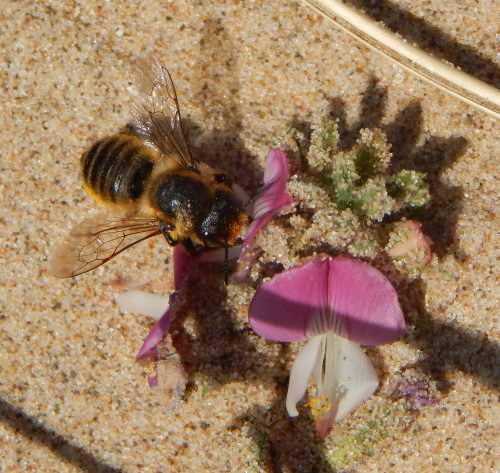 Coastal Leafcutter Bee - Megachile maritima - female - foraging on restharrow
Coastal Leafcutter Bee - Megachile maritima - female - foraging on restharrow2. Nutritional offering
Not all pollens and nectars are the same! The nutritional content of flower pollen and nectar (carbohydrates, micronutrients, lipids, protein) varies widely among plants, and scientists have found that this influences foraging activity1.
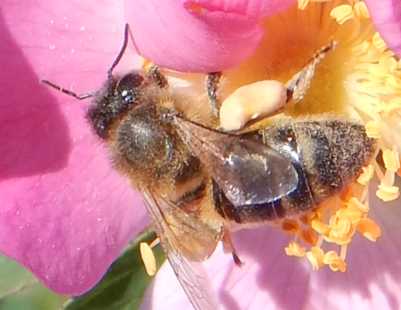 Honey bee - Apis mellifera worker foraging on wild rose.
Honey bee - Apis mellifera worker foraging on wild rose.3. Nectar refill rate
However, although some flowers offer more nectar, others may have a faster nectar refill rate. This means that the same flower may be visited by bees multiple times to extract the nectar. For some time, the flower will continue to replenish the nectar reward offered, but the rate at which this occurs varies between species.
For example, borage flowers refill with nectar about every two minutes, comfrey flowers provide lots of nectar and refill in around 40 minutes.
Bird’s foot trefoil, on the other hand takes about 24 hours to replenish with nectar2.
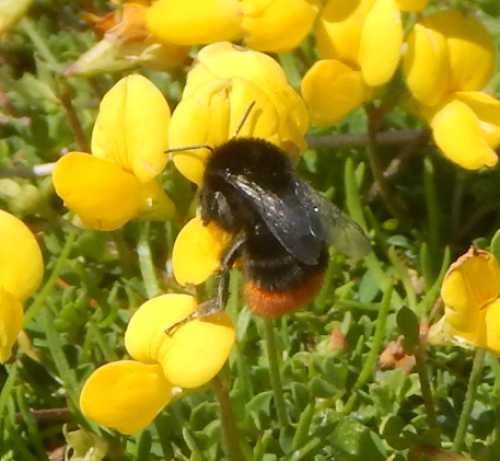 Red-tailed bumble bee - Bombus lapidaries (worker) on bird's foot trefoil.
Red-tailed bumble bee - Bombus lapidaries (worker) on bird's foot trefoil.Does this mean bees will prefer borage flowers to bird’s foot trefoil? The answer is “it depends”. This brings me to my next point about why some bees may prefer certain flowers to others…
4. Compatibility of flower and bee species foraging preference
Different bees are more easily able to extract the food rewards from particular flowers than others. For example, short tongued bees may struggle with flowers that have deep florets or gullets (although bees may adapt to this challenge by engaging in nectar robbing).
Some bee species may also struggle to release pollen from anthers, whereas other may use a technique known as buzz pollination.
These factors may result in flowers being more commonly visited than some types of bees and not others.
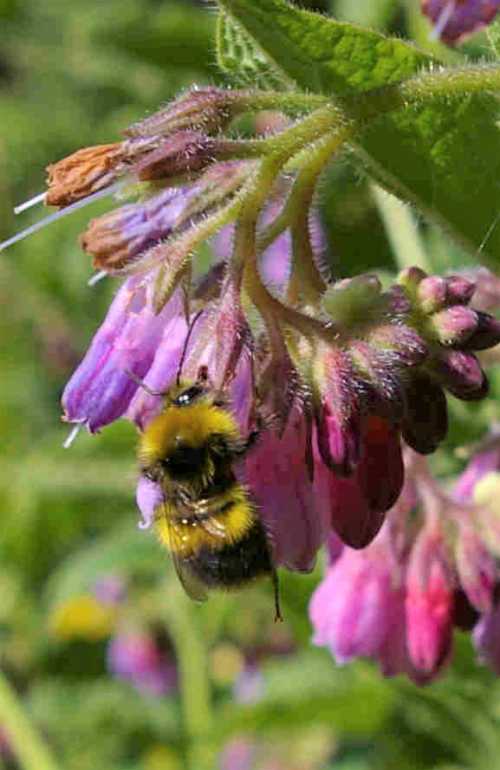 Bumble bee nectar robbing comfrey flower.
Bumble bee nectar robbing comfrey flower.In addition, flowers have developed other ways to entice bees and other pollinators, (the technical term is ‘Pollination Syndromes’) including scent and UV markings on the petals.
5. Seasonality factors
It also depends on the time of year when the flower is at its peak for producing nectar and pollen, and the species of bees that are active at that time, and of course, the needs and preferences of those bees.
This means that you may see species A foraging on a flower, whilst wondering why you are not seeing species B. It could be that species B has not emerged from their winter snooze yet.
6. Peak nectar production of flowers
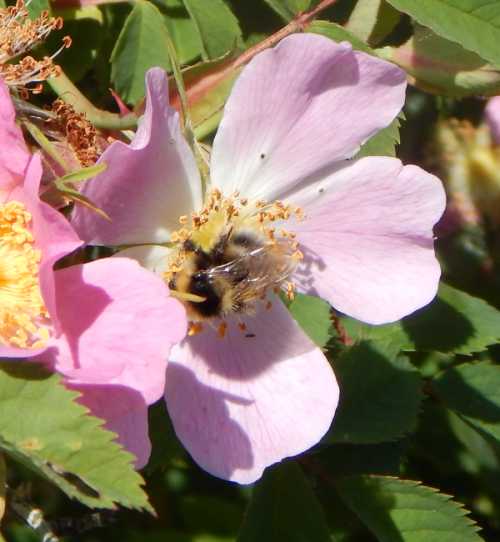 Garden bumble bee - Bombus hortorum (worker) foraging on wild rose flower.
Garden bumble bee - Bombus hortorum (worker) foraging on wild rose flower.
Even flowers that are favourites for one week may suddenly be abandoned by bees in favour of different flowers the
next week.
For example, I have observed bees visiting some of the wild dog roses growing in my area, and have taken photographs of many bee species foraging on them.
Eventually, the roses were abandoned (probably because of depleting food rewards) in favour of bramble flowers which also offer a great food reward for bees.
Yet research has shown that even the bramble flowers will ultimately become less appealing to bees as the food offering inside the flowers eventually reduces.
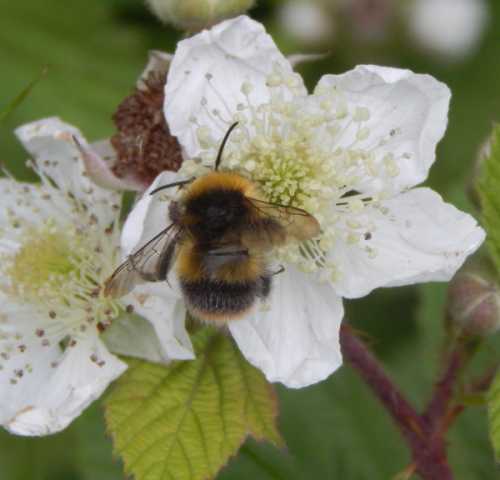 Early bumble bee - Bombus pratorum (male) feeding on bramble flower.
Early bumble bee - Bombus pratorum (male) feeding on bramble flower.Do all bees visit flowers only for nectar and pollen?
A few bees collect other things, such as floral oils and also nesting materials, in which case, they visit flowers that offer what they need.
For example, bird’s foot trefoil is an important flower for the Silvery leafcutter bee (Megachile leachella). This flower not only provides food, but sometimes the petals may also be used in nest construction.
Indeed, flowers and plants have a number of uses for bees beyond food, although food is the most important.
References and resources
(1) Vaudo, A. D., Tooker, J. F., Grozinger, C. M., & Patch, H. M. (2015). Bee nutrition and floral resource restoration. Current Opinion in Insect Science, 10, 133-141. [141]. https://doi.org/10.1016/j.cois.2015.05.008
(2) A Sting in the Tale - by Dave Goulson
Create a
lawn for bees
FREE PDF DOWNLOAD:
Planning And Planting A Bee Friendly Garden
If you found this page helpful or interesting, I'd really be grateful if you would share it with others - if not this page, perhaps another, such as Gardening For Bees.
Thank you so much :) .
